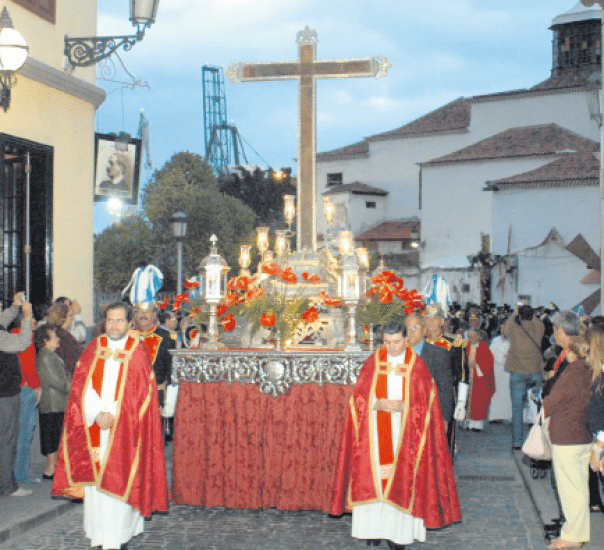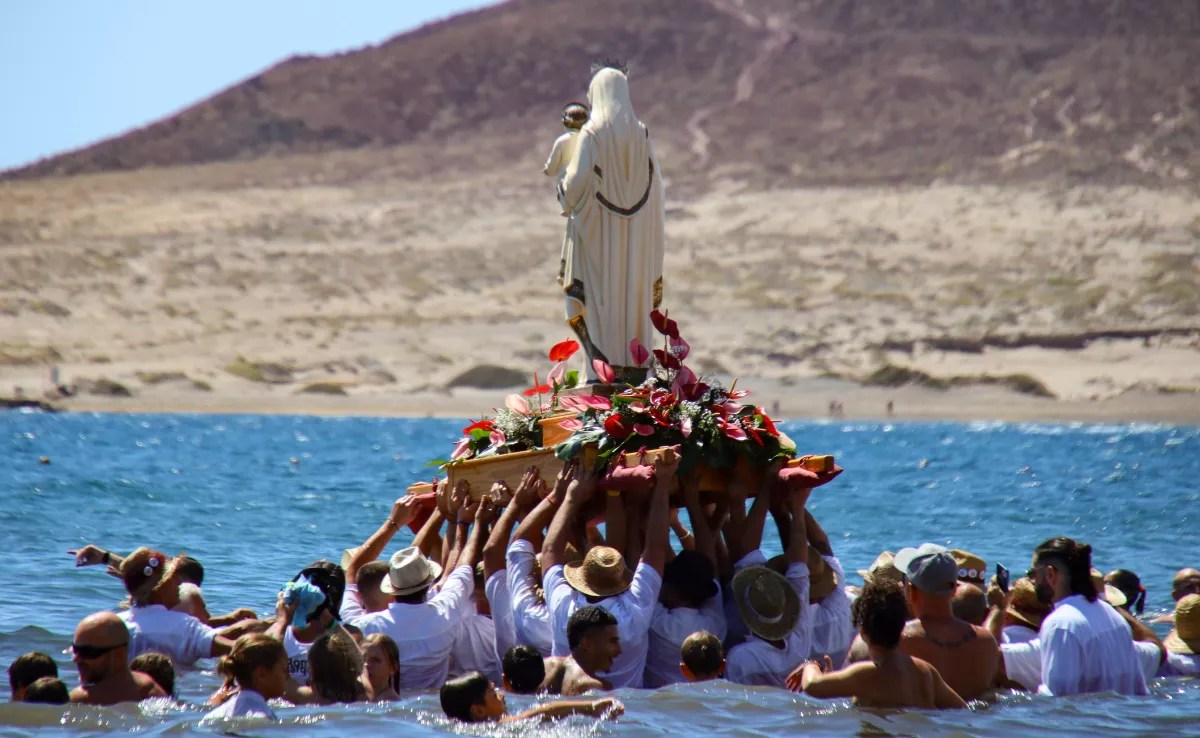
On May 3, 1494, 528 years ago today, the Castilian hosts under the command of Alonso Fernandez de Lugo they nailed to the Añazo beach a rudimentary wooden cross, 2.05 meters by 1.30, and 0.10 meters thick, with which they officiated the mass that commemorated the Foundation of the Port and Place of Santa Cruz. That is where the history of the current capital of the island of Tenerife began, as narrated by its official chronicler, José Manuel Ledesma, who claims “the historical and commemorative character that the founding festival deserves”.
As the date coincided with the festivity of the Invention of the Cross, there is documented evidence that from 1513 the Cabildo appointed guards to join the party that was celebrated that day in the Port and, in addition, adds: “That It’s the village festival.” The Foundational Cross would remain in the same place until 1745, withstanding rain, sun and seas, until the mayor Juan de Arauz y Lordelo, observing the state of deterioration and abandonment in which it was found, ordered him to build a chapel in the Plazuela de la Cruz, at the source of the Plaza de la Iglesia de La Concepción, calling it the Chapel of the Holy Cross. Today this place coincides with the old Unelco site, next to the Mapfre building, between Marítima Avenue and Bravo Murillo Street, very close to the tram stop called Fundación.
In 1794, when the aforementioned chapel was demolished, the Franciscan friars placed the cross next to the door of the hermitage of San Telmo, where it was forgotten. The Dominican friar Lorenzo Siverio, valuing what that ancient symbol represented for the population, made the decision in 1850 to move it to the chapel of the Hospital de los Desamparados. It would be in 1871, when the mayor Emilio Serra y Ruz was officially interested in the cross, promoting that its municipal ownership be recognized, since the parish did not see with good eyes the claims of the City Council. The Marina authorities argued that it belonged to them, since San Telmo was the hermitage of the seafarers, and the City Council of La Laguna argued that it should be preserved together with the Banner of the Conquest, as it was a fundamental piece in the history of the Island. The Provincial Commission had to intervene to report, on April 19, 1873, that the Cruz de la Conquista belonged in fact and in law to the municipality of Santa Cruz.
In 1892, the City Council, upon verifying the unfortunate state in which the revered relic was found and in order to preserve and guard it in the best possible conditions, agreed that it be conveniently embedded in good wood and placed in a reliquary made of wood, nickel and crystal, in the upper part of which is embossed the coat of arms of Santa Cruz and an inscription that says: “Here is the Cross placed by the conqueror of Tenerife, Don Alonso Fernández de Lugo, on the altar before which it was celebrated for the first time. time the Holy Sacrifice of the Mass on the beaches of Añazo, on May 3, 1494. It was paid for by the Hon. Santa Cruz City Hall in 1892. In hoc signo vinces”.
In 1896, the Cross would be permanently transferred to the main church of La Concepción, where it remains and is worshiped today. From here, every May 3, she leaves in procession through the streets of the city. Today, once the restrictions of the pandemic have been overcome, she will do it again accompanied by her faithful ones.
The May Festival celebrates 130 years of history in this edition
The first civic procession of the Foundational Cross took place in 1867. But the first Santa Cruz May Festivities were not celebrated until 1892, now 130 years ago. Chronicler José Manuel Ledesma tells us that it “lasted three days and the animation was extraordinary. At night there was a military retreat that went through the main streets. In addition, a dance was held at the Casino, a literary-musical evening at the Instructional Cabinet and a procession of allegorical figures, carried out by ladies from the Circle of Friendship who wore fanciful costumes. The palm colony also wanted to contribute to the brilliance of the festivities and celebrated the dance of the dwarfs”. Two years later, the most brilliant ones were organized until then, according to Ledesma, “because the Fourth Centenary of the Foundation of the City was being commemorated. The streets and squares were decorated with artistic arches and magnificent lighting. All the acts were of great solemnity. The cross toured the center of town for the first time, accompanied by the army. The palm colony repeated the dance of the dwarfs”.













